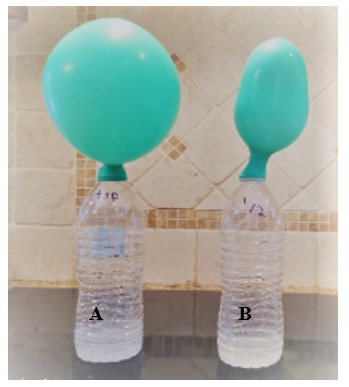Introduction
The reaction rates of different chemicals primarily depend on the bombardment rate of molecules involved. This collision rate depends on many other variables that can be manipulated to affect the rates of reactions. Manipulating these factors either induces a positive or negative yield in the response. These factors include a catalyst, any chemical substance that either increases or decreases the rate of a chemical reaction. Catalysts are neither consumed in the reaction nor do they alter the end products of the reaction.
Secondly, in many chemical reactions, the rate of the chemical reaction is directly proportional to the temperature. Thus, altering the temperature affects the reaction rate (Veltri & Holland, 2020). An elevation in temperature increases the kinetic energy of the reactant molecules, predisposing them to collisions, thus increasing the reaction rate. Temperatures beyond the optimum denature most enzymes.
The concentration of the chemical reactants also affects the rate of reaction by altering the number of reacting molecules. A higher concentration increases the number of molecules available for collision. This increases the rate of collision and hence the rate of reaction. Reducing the concentration, therefore, reduces the reaction rate. Increasing the surface area for reaction increases the reaction rate by providing a broad surface for a collision of molecules. We can achieve this by using smaller particles of solid reactants such as powder forms.
Vinegar-Baking Soda Reaction
it is an acid-base reaction involving sodium bicarbonate, a base in the baking soda and vinegar that contains acetic acid (Artdej & Thongpanchang, 2008). In the reaction, hydrogen ions in the acetic acid react with the sodium bicarbonate ions to form sodium acetate and carbonic acid (Chan et al., 2020).
NaHCO3 + HC2H3O2 → NaC2H3O2 + H2CO3
The carbonic acid is broken down into water and carbon dioxide through decomposition.
H2CO3 → H2O + CO2
Balloon Blow-Up Experiment Using Baking Soda and Vinegar
Aim
To investigate how increasing the concentration affects vinegar’s sodium bicarbonate and acetic acid reaction rate.
Hypothesis
As the concentration of the independent variable increases, the rate of reaction should increase, leading to the production of more gas and a more inflated balloon.
Requirements
- Clean, dry 500 ml Bottle.
- Balloons.
- Baking Soda.
- Weighing scale.
- Vinegar.
- Funnels.
- Measuring jar.
- Teaspoon.
- Metal weights measuring 1 liter.
- Rubber band.
- 20 liters calibrated bucket with water halfway.
Procedure
- Using the teaspoon, scoop and measure 10grams of the baking soda
- Using a funnel, add the measured baking soda into one balloon.
- Using a rubber band, fasten the neck of the balloon to prevent any leakage
- Measure 150ml of the vinegar using the measuring jar and another funnel; add the vinegar to the water bottle.
- Mount the balloon at the mouth of the bottle containing the vinegar carefully and allow the balloon to hang freely at the sides of the bottle.
- Loosen the rubber band at the neck of the balloon.
- Raise the balloon gradually until it’s all emptied.
- Hold the bottle at the base and observe the reaction.
- When the fizzing stops, fasten the neck of the balloon using the rubber band (Nichols, 2018).
- Attach the balloon to the metal weights and insert it into the calibrated bucket until fully immersed. Record the new volume of water and remove the balloon and the metal weight.
- Using a different set of apparatus, repeat the same experiment using 20 grams of baking soda, and observe and record the findings (Veltri & Holland, 2020).
Risk Assessment
Baking soda can irritate the lungs if inhaled, so the experimenter should use nose masks.
Vinegar is corrosive to the skin and eyes, and safety glasses should be put on, and keen care should be taken on bubble formation.
Carbon dioxide may be risky in case of leakage and high amounts of inhalation.
Results and Findings

Analysis
The experiment was fair as all the controlled variables, such as vinegar volume, were maintained at a constant that is 150 (Andrews et al., 2020). the independent variable, the amount of baking soda, increases from 10 grams to 20 grams, leading to an increase in the volume of gas produced from 4 liters to 7 liters. The results were recorded accurately from observations. All the measured results were recorded directly from the calibrations of the bucket.
Discussion
The stated hypothesis is true and accurate because, as the amount of baking soda increases from 10 grams to 20 grams, the volume of gas produced also increases from 4 liters to 7 liters. This proves that the rate of reaction increases as the concentration of the substrate increases (Royce, 2020). This increases the number of bicarbonate molecules capable of colliding with the hydrogen ions. Therefore, the rate of reaction increases as the concentration increases.
References
Andrews, J. L., de Los Rios, J. P., Rayaluru, M., Lee, S., Mai, L., Schusser, A., & Mak, C. H. (2020). Experimenting with at-home general chemistry laboratories during the COVID-19 pandemic. Journal of Chemical Education, 97(7), 1887-1894.
Artdej, R., & Thongpanchang, T. (2008). A dramatic classroom demonstration of limiting reagent using the vinegar and sodium hydrogen carbonate reaction.Journal of Chemical Education, 85(10), 1382.
Chan, K., Madsen, L., Kashani, N., & Lee, R. (2020). Bubbling baking soda.The Expedition, 11.
Nichols, D. (2018). Improved baking soda vinegar rocket. The Physics Teacher, 56(9), 611-611.
Royce, C. A. (2020). Understanding chemical and physical changes.Science and Children, 57(5), 18-25.
Veltri, L. M., & Holland, L. A. (2020). Microfluidics for personalized reactions to demonstrate stoichiometry.Journal of Chemical Education, 97(4), 1035-1040.